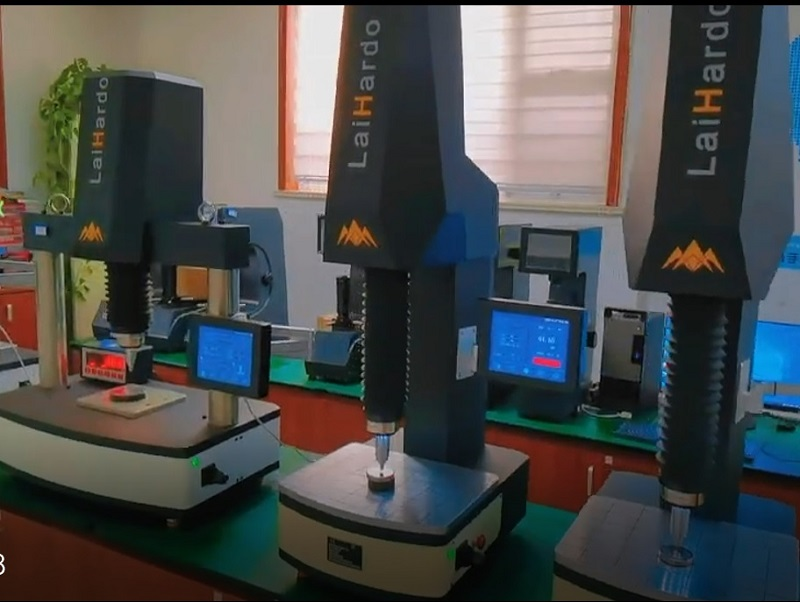The hardness tester is mainly used for the hardness test of forged steel and cast iron with uneven structure. The hardness of forged steel and gray cast iron has a good correspondence with the tensile test. It can also be used for non-ferrous metals and mild steel, and the small diameter ball indenter can measure small size and thinner materials.
Hardness refers to the ability of a material to resist local deformation, especially plastic deformation, indentation or scratches, and is one of the important performance indicators of metal materials. Generally, the higher the hardness, the better the wear resistance. It is an index to measure the softness and hardness of materials. According to different test methods, hardness is divided into three types. Let’s take a look at each of them:
Scratch hardness:
It is mainly used to compare the softness and hardness of different minerals. The method is to choose a rod with one end hard and the other end soft, pass the material to be tested along the rod, and determine the hardness of the material to be tested according to the position of the scratch. Qualitatively speaking, hard objects make long scratches and soft objects make short scratches.
Press-in hardness:
Mainly used for metal materials, the method is to use a certain load to press the specified indenter into the material to be tested, and compare the softness and hardness of the material to be tested by the size of the local plastic deformation on the surface of the material. Due to the difference of indenter, load and load duration, there are many kinds of indentation hardness, mainly including Brinell hardness, Rockwell hardness, Vickers hardness and microhardness.
Rebound hardness:
Mainly used for metal materials, the method is to make a special small hammer fall freely from a certain height to impact the sample of the material to be tested, and use the amount of strain energy stored (and then released) in the sample during the impact (through the return of the small hammer) jump height measurement) to determine the hardness of the material.
The hardness tester produced by Shandong Shancai/Laizhou Laihua Testing Instrument is a kind of indentation hardness testing instrument, which indicates the ability of the material to resist the intrusion of hard objects into its surface. How many kinds are there?
1. Brinell Hardness Tester: It is mainly used to measure the hardness of cast iron, steel, non-ferrous metals and soft alloys. It is a high-precision hardness test method.
2. Rockwell hardness tester: a Rockwell hardness tester that can test the hardness of metal by touching the sample on one side. It relies on magnetic force to adsorb the Rockwell hardness tester head on the steel surface, and does not need to support the sample
3. Vickers Hardness Tester: Vickers Hardness Tester is a high-tech product integrating optoelectronics and electronics. The machine is novel in shape, has good reliability, operability and intuitiveness. S and Knoop hardness testing equipment.
4. Brockwell hardness tester: The Brockwell hardness tester is suitable for determining the hardness of ferrous metals, nonferrous metals, hard alloys, carburized layers and chemically treated layers.
5. Microhardness tester: Microhardness tester is a precision instrument for testing the properties of metal materials in machinery, metallurgy and other industries, and is widely used in various industries.
6. Leeb Hardness Tester: Its basic principle is that an impact body with a certain mass impacts the surface of the sample under a certain test force, and measures the impact velocity and rebound velocity of the impact body at a distance of 1 mm from the sample surface, using electromagnetic principles , a voltage proportional to the speed is induced.
7. Webster hardness tester: The principle of Webster hardness tester is a hard steel indenter with a certain shape, which is pressed into the surface of the sample under the standard spring test force.
8. Barcol Hardness Tester: It is an indentation hardness tester. It presses a specific indenter into the sample under the action of a standard spring force, and determines the hardness of the sample by the depth of the indentation.
Post time: May-24-2023



